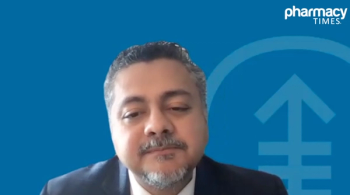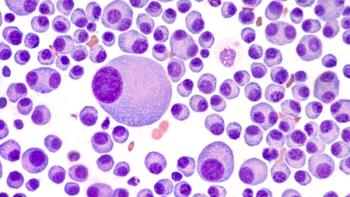
Cilta-Cel Spurs Remission Milestone—But Is It a Cure?
Key Takeaways
- Ciltacabtagene autoleucel shows promising long-term remission in RRMM, with one-third of patients progression-free at 5 years without maintenance therapy.
- Experts are cautious about labeling cilta-cel as curative, emphasizing the need for 10-year data to confirm durability of responses.
CARTITUDE-1 trial reveals cilta-cel's potential in achieving long-term remission for relapsed/refractory multiple myeloma, sparking discussions on curative possibilities.
The word “curative” has rarely entered the conversation around relapsed/refractory multiple myeloma (RRMM)—until now. Emerging long-term follow-up data from the CARTITUDE-1 trial (NCT03548207) suggest that ciltacabtagene autoleucel (cilta-cel, Carvykti; Janssen Biotech) may be approaching that threshold.1,2
However, experts remain cautious about using the word “cure,” and many agree that these results mark a pivotal shift in how remission and long-term outcomes are understood in myeloma—especially as cilta-cel moves into earlier lines of treatment. With 10-year data still to come, the prospect of curative potential is no longer theoretical, but it's also not definitive.
Gabe Hinojosa, PharmD, BCOP, Clinical Pharmacy Specialist Oncology/Hematology, UT Southwestern
CARTITUDE-1 is the hot topic right now. The new long-term follow-up data presented at ASCO this year are especially exciting. We saw 5-year follow-up results showing longer median overall survival. Most notably, over a third of patients were still alive, progression-free, and in remission—with no additional maintenance therapy.
Historically in heme malignancies, the 5-year mark has been considered the transition point from remission to potential cure. So that word “cure” is being tossed around, especially on social media. I’ve used it myself—with a question mark. I think we need to be cautious about marketing it as a cure, but it’s incredibly exciting to see such long drug-free intervals.
As we move from 5-year to 10-year data, we’ll better understand the durability of these responses. If patients are still in remission at the 10-year mark, it would be hard to argue against calling it a cure. One key difference between the trial and current real-world use is that the trial enrolled patients after 3 or more lines of therapy. They were heavily pretreated and refractory to many drugs.
Now that cilta-cel is moving into the second-line space, we’re seeing even deeper, more durable responses. That could mean that instead of one-third of patients remaining in remission beyond 5 years, it could be half—or even two-thirds. It’s incredibly exciting and may shift how we think about when to offer cilta-cel. But I would still be cautious about using the word "cure" at this point.3
Matthew Lei, PharmD, BCOP, Clinical Pharmacy Specialist, Lymphoma, Massachusetts General Hospital in Boston, Editorial Advisory Board Member for Pharmacy Practice in Focus: Oncology
The 5-year follow-up of the CARTITUDE-1 trial evaluating cilta-cel in patients with RRMM demonstrated that approximately a third of patients were progression-free at a median follow-up of 61.3 months (approximately 5 years). Furthermore, characteristics associated with a greater than or equal to 5-year progression-free survival support the earlier use of cilta-cel in patients with lower tumor burden, emphasizing the importance of effective bridging therapy to optimally debulk prior to CAR (chimeric antigen receptor) T-cell infusion. The plateau of the [progression-free survival] curve demonstrates that long-term durable remissions in patients with heavily pretreated RRMM are possible while emphasizing the continued goal of translating this benefit to a broader set of patients while mitigating the acute and potential long-term toxicities of cilta-cel. While longer follow-up is required to determine whether a single infusion of cilta-cel is a curative therapeutic strategy, the updated results of CARTITUDE-1 serve as a benchmark going forward.
Victoria Nacher, PharmD, BCOP, Michigan Medicine in Ann Arbor, Michigan
The CARTITUDE-1 data, presented at EHA, showed that 30% of patients treated with CAR T, specifically cilta-cel, are still without disease relapse at 5 years. And The New York Times had a same-day article about it going around, using that word: “cure.” I think that’s really important for patients, especially in multiple myeloma, because that’s not a word we ever use.
We don’t say that word—we don’t throw it around, even with cilta-cel. We still need to see longer-term data, because we know that even in multiple myeloma, with drugs like lenalidomide, patients can relapse 10 to 15 years later. It’s kind of like breast cancer—you can be disease-free for 10 years, but it’s one of those solid tumors where you still worry, right? I do think CAR T, specifically cilta-cel, is changing the game in myeloma, and I hope we’ll be able to use the word “cure” in the future. But I still think it’s premature.
That said, it’s amazing to see that in this heavily pretreated patient population—where people literally have no other options, or the options they do have might only work for a couple of months or maybe a year—30% are still off therapy and without measurable disease at 5 years.
Cilta-cel specifically—not ide-cel, the other CAR T product—is changing the landscape. But again, we need more follow-up to know the best timing and what long-term outcomes look like. It’s just too early to throw around the “C word.”4
REFERENCES
1. A study of JNJ-68284528, a chimeric antigen receptor t cell (CAR-T) therapy directed against b-cell maturation antigen (BCMA) in participants with relapsed or refractory multiple myeloma (CARTITUDE-1). Updated April 2, 2024. Accessed June 9, 2025. https://www.clinicaltrials.gov/study/NCT03548207
2. Gerlach A. Single infusion of cilta-cel yields 5-year progression-free survival in multiple myeloma. Pharmacy Times. June 9, 2025. Accessed July 1, 2025. https://www.pharmacytimes.com/view/single-infusion-of-cilta-cel-yields-5-year-progression-free-survival-in-multiple-myeloma
3. Gerlach A, Hinojosa G. Pharmacists reimagine myeloma care with insights from ASCO. Pharmacy Times. June 24, 2025. Accessed July 1, 2025. https://www.pharmacytimes.com/view/pharmacists-reimagine-myeloma-care-with-insights-from-asco
4. Gerlach A, Nacher V. New drugs, new decisions: How pharmacists are guiding the future of hematologic care. Pharmacy Times. June 19, 2025. Accessed July 1, 2025. https://www.pharmacytimes.com/view/new-drugs-new-decisions-how-pharmacists-are-guiding-the-future-of-hematologic-care
Newsletter
Stay informed on drug updates, treatment guidelines, and pharmacy practice trends—subscribe to Pharmacy Times for weekly clinical insights.




















































































































































































































